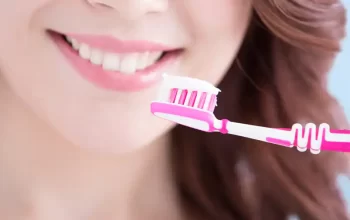Orthodontics not only corrects misaligned teeth and improves facial aesthetics, but it also reduces the risk of oral health problems down the road. This includes a lower risk of tooth decay and gingivitis.
Treatments such as braces, which consists of brackets that are affixed to each individual tooth with wires, or clear (“invisible”) aligners, help patients achieve the ideal smile.
Aesthetics
A perfect smile is a symbol of health and beauty. The teeth should be aligned, have a good shape, no gaps or dark areas and be white.
A crooked or uneven smile causes shame and can affect your self-esteem. It can also cause serious problems like gum disease, jaw pain and other oral diseases. Therefore, it is best to seek a treatment as soon as possible.
Studies have shown that the most distracting characteristics of a smile were hypodontia, gingival exposure, a reverse occlusal plane and dental crowding. In addition, women were more critical of a gingival smile than men. However, most patients aspire to have a smile that is both healthy and beautiful. This can be achieved by using smile esthetics. This involves fixing a patient’s teeth, gums and mouth with various methods such as laminate. However, the dentist must make sure that a patient’s teeth are healthy before performing this treatment. Because, as an expert says, “health comes before beauty.” Then, after treatment, a patient will get a smile that looks pretty.
Function
Orthodontic treatment isn’t just about aesthetics, it also has a positive impact on the function of the teeth and jaw. Crooked and crowded teeth can create tight spaces where food particles and bacteria hide, leading to tooth decay and gum disease. Orthodontics can correct these problems by aligning the teeth to make them easier to brush and floss, reducing the risk of oral health issues in the future.
A poor bite alignment, such as an overbite or underbite, can lead to abnormal wear of the teeth and strain on the jaw joints. These conditions can also make it harder to chew and speak properly. By correcting these problems, orthodontics can help you enjoy better function and a healthier smile for life.
Many people think that orthodontic treatment is only for children, but this is not true. Thanks to advances in orthodontic technology, adults can now achieve a beautiful, straight smile by using braces or aligners that are invisible and discreet.
Self-Confidence
A beautiful smile makes a lasting impression on those you meet. It increases confidence and improves interactions in social situations. It also enhances self-esteem, and it may even help you advance in your career.
Orthodontics can treat a wide range of problems, including crooked teeth and jaw misalignment, such as an overbite or underbite, which can hinder chewing and speaking. It can also reduce the risk of tooth decay and gum disease in those areas.
A straighter grin is easier to clean, which reduces the risk of dental issues like cavities and gum disease. It also helps prevent abnormal wear of the enamel, which can lead to gum recession. Treatment options range from traditional metal braces to invisible clear aligners. Regardless of what treatment option you choose, orthodontics can give you the stunning smile you desire. Contact us today to see how we can transform your smile in Burlingame, Hillsborough, or Millbrae.
Oral Health
Orthodontics is the specialty of dentistry and dentofacial orthopedics concerned with the diagnosis, prevention, interception, guidance, and correction of malpositioned teeth and jaws. It is most often accomplished by using “appliances” like braces and aligners to shift teeth into their proper positions.
Crooked or crowded teeth not only affect the aesthetics of your smile but can also make it more difficult to maintain good oral hygiene. This can lead to tooth decay, gum disease, and other dental issues that require intervention from a dentist specializing in orthodontic care.
While many people think that they are too old to receive treatment for a misaligned smile, orthodontists can now straighten the teeth of adults of all ages. However, it is important for adult patients to maintain good oral health practices during treatment and to follow their orthodontist’s recommendations after treatment to prevent teeth from reverting to their pre-treatment position. This is because teeth that have been moved by orthodontics are more susceptible to plaque buildup and decay than those with a naturally healthy bite.





